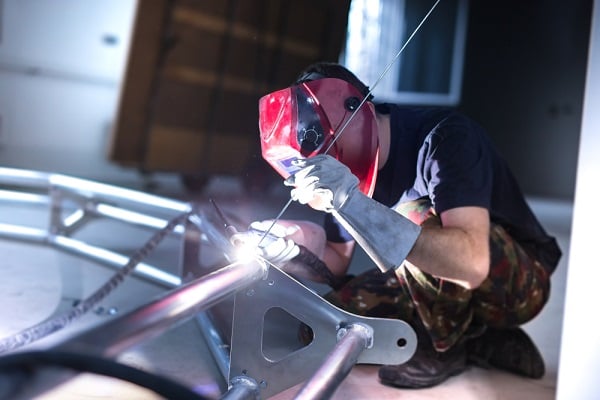Introduction: What is Tig Welding and What Are Its Benefits?
TIG welding, also known as gas tungsten arc welding (GTAW), is a type of welding that uses a non-consumable tungsten electrode to join two pieces of metal. It is a popular choice for welding aluminium and other metals that need precise control and accuracy. Tig welding has many advantages over other types of welding techniques. Such as its ability to produce high-quality welds without the need for filler material. Making it ideal for industries such as aerospace, where precision and strength are paramount. In this article, we will discuss tig welding aluminium, and the benefits it offers.
Step-by-Step Guide on How to Properly Prepare and Set Up for Tig Welding Aluminum
Tig welding aluminium is a common industry application. However, it’s important to prepare and set up your tig welder for aluminium before you start welding. This step-by-step guide will show you how to do just that. Learn best practices for preparing the tig welder, and setting up the welding equipment. With this information, you can ensure that your aluminium welding setup is safe and effective.
- Clean the aluminium, removing the oxidisation layer with a wire brush or similar.
- Use AC polarity if you have an AC/DC TIG welder, this will also help to keep your weld oxidisation free.
- Set the correct welding amperage (details are usually in your machine’s manual)
- Ball up your tungsten tip
How to Control Heat and Achieve the Right Balance of Amperage Settings When Tig Welding Aluminium
Tig welding aluminium is a precise and challenging job, requiring the right balance of heat and amperage settings. It is important to understand these settings when tig welding aluminium. This will help to achieve a successful weld. Aluminium welding requires a large amount of heat to raise enough temperature to form a weld puddle. But, when formed, reduce this by up to half to avoid issues like cracking and porosity. This is best achieved by using a foot pedal to control the amperage. You can also use a shorter arc, which will help to keep the heat in, reducing the chance of a run-away puddle.
Tips & Tricks on How to Achieve Perfect Results with Your Tig Welder on Aluminium
Welding aluminium is a challenging but rewarding task. With the right tools and techniques, you can achieve perfect results when tig welding aluminium. Some tips and tricks that can help you get the most out of your tig welder when welding aluminium include:
- Using the right equipment. For best results, use an AC/DC TIG welder when welding aluminium. Ensure you also have the correct consumables fitted in the torch, suitable for aluminium.
- Select the correct welding parameters. As a general rule, it is advisable to use 1 amp per 0.001 inch material thickness. However this reduces when material thickness is over 1/4 in. Using AC current avoids oxidisation. For a comprehensive list, including gas flow and tungsten diameter, click here.
- Adjust the balance control, this will also help to prevent oxidisation the weld pool. Ensuring a correct balance between wave forms is critical.
- The addition of filler metal will help to give your aluminium TIG weld that shiny look you see in all the pictures! Providing you have your other settings correct, of course!
It can be trial and error, but these tips will help you to achieve successful aluminium welding with a tig welder.
Common Mistakes in Tig Welding Aluminium and How To Avoid Them
Tig welding aluminium is a complex process that requires a lot of skill and knowledge. Despite this, many welders make common mistakes that can lead to serious consequences. Take a look at some of the most common mistakes made when welding aluminium, and how to avoid them below:
- Welding in the wrong polarity/balance, resulting in the arc not breaking through the oxide layer. Ensure your settings are correct.
- A lack of fusion in the weld root, causing an improper weld. Avoid by reducing the arc length (distance from the torch to the weld area).
- Craters at the end of a weld, resulting in cracking. This can occur when the filler rod is removed, or reducing the weld power, too quickly at the end.
- Poor gas coverage, leading to weld contamination. You should ensure that everything is correct with the gas supply. The right gas type and there are no loose fittings or connections to cause leaking. Refer to the manual and check correct gas flow rates.
- Too much amperage, this can cause a run-away weld pool that could lead to material burn-through. Avoid this by reducing the amperage after arcing, or try increasing the travel speed.
By following these tips, welders can ensure that their aluminium tig welding projects are completed safely, and with the highest quality results.
If you’re looking for a TIG welder for aluminium, click here to view current availability and get prices.

